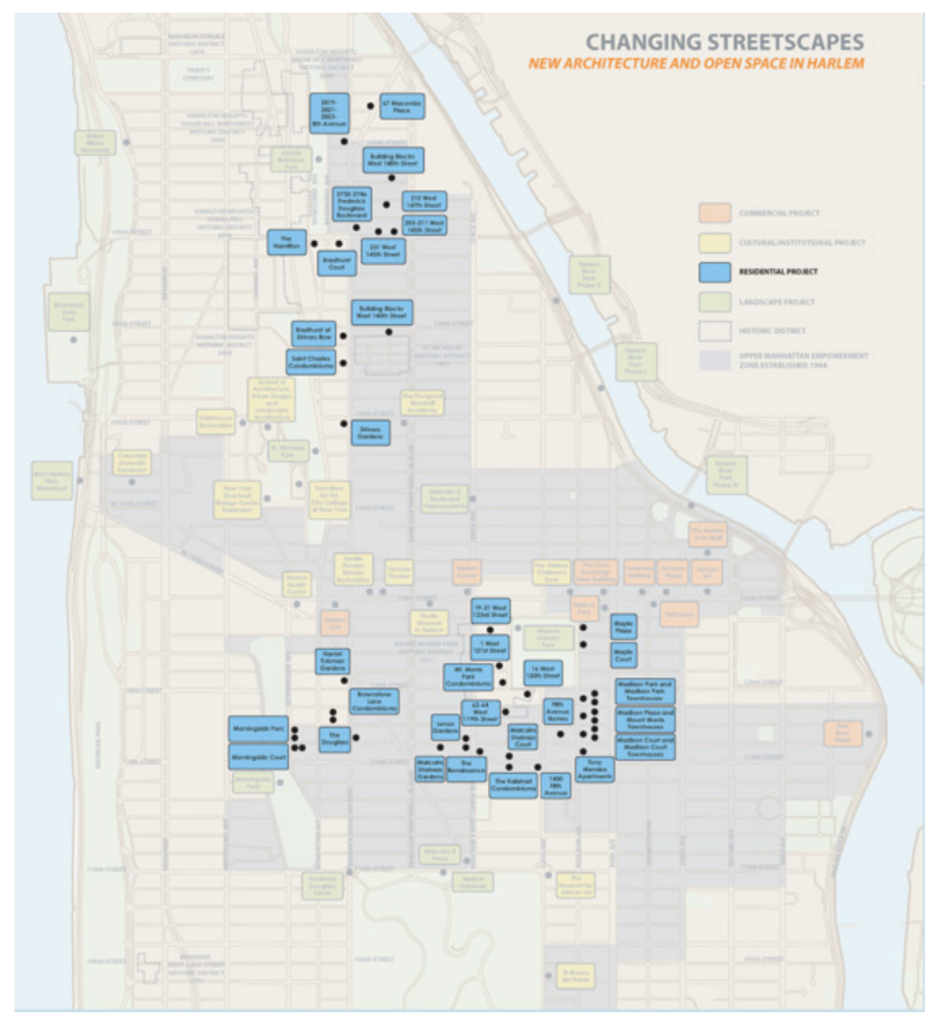History
Housing abandonment and disinvestment swept across Harlem in the 1960s and 1970s, displacing residents and leaving thousands of housing units, countless vacant lots, and entire blocks in city hands.
By the 1980s the New York City Department of Housing Preservation and Development (HPD) was the de facto owner of 60% of Harlem’s residential real estate due to tax delinquency and abandonment by owners.
Beginning in 1986 with Mayor Ed Koch announcing the city’s “Ten Year Plan,” HPD began developing innovative partnerships to return deteriorated and vacant properties to active life and private hands, while meeting the community’s demand for decent affordable housing. Harlem’s impassioned churches and other civic organizations created community development corporations charged with developing and managing housing produced through myriad public and private funding programs. Harlem Congregations for Community Improvement (HCCI) formed in 1986 out of a coalition of religious organizations from across Harlem. Abyssinian Baptist Church in Central Harlem established Abyssinian Development Corporation in 1989 to sponsor much needed housing and commercial ventures.

HPD reports that the city chose to focus its efforts in Harlem in locations where new and renovated housing would create a critical mass of visible, positive change within some of the hardest hit neighborhoods. The map at above indicates in blue all the individual projects featured in this exhibit. The display that follows organizes these projects according to the clusters or “corridors” as HPD had envisioned them.
Together with HPD, private developers, banks and national intermediaries like Local Initiative Support Corporation (LISC) and the Enterprise Foundation, community-based organizations have transformed neighborhoods through the creation of decent housing for low-and moderate-income residents. Adding to the city’s help, New York State’s Harlem Community Development Corporation (HCDC)––a successor organization to the Harlem Urban Development Corporation–is collaborating with local nonprofits and for-profit developers to produce opportunities for moderate and middle-income home ownership. In sum, these developments have spurred a reaction in the private real estate market, which raises a new set of concerns about gentrification and affordability for long-time Harlem residents.
HPD notes that since 1987 approximately 40,000 units of affordable housing have been created in Harlem. Six thousand of these offer some form of home ownership as condominiums, coops or fee-simple townhouses–many with rental-income units.(NYC Department of Housing Preservation and Development, Harlem Neighborhood Tour, Spring 2004) Many new apartment buildings also provide ground floor retail, reestablishing an active street life in Harlem and responding to the community’s insistence on including neighborhood commercial services in new developments.
In 2003, Mayor Michael Bloomberg issued a renewed public commitment, pledging to spend more than $3 billion citywide by 2007 “to preserve and create 65,000 units of housing for low, moderate and middle income New Yorkers, including providing City-owned land for new construction of over 7,000 units of housing.” (NYC Department of Housing Preservation and Development, The New Housing MARKETPLACE, 2002) Harlem will continue to benefit from this initiative.

Changing streetscapes –– views up West 145th Street from Central Harlem around Frederick Douglass Boulevard (Eighth Avenue) toward “Sugar Hill” taken in the early 1900s (top left), the early 1990s (top center) and today. New apartment buildings opening in the last year on the south side of the street are the Bradhurst Court in the foreground at Frederick Douglass Boulevard and the Hamilton between Bradhurtst and Edgecombe Avenues.


